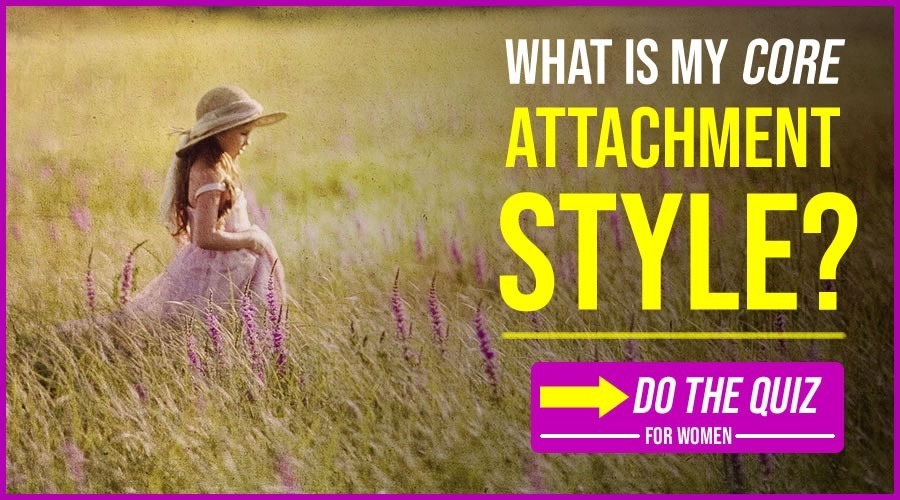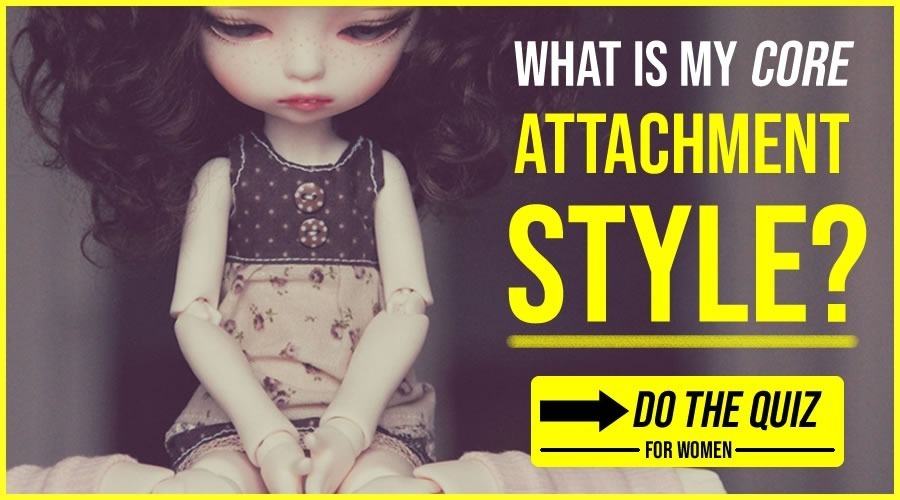NCRW
Disorganized Attachment Style: Beware The 8 Signs You Have It & What To Do
Author: Kyrsta Anderson & Renée Shen.
Are you wondering whether you have a disorganized attachment style?
Or perhaps you’re wondering whether someone you love has a disorganized attachment style…
Disorganized attachment is the often overlooked attachment style. Most people think of avoidants or anxious types when they think of the attachment styles.
So let’s look deeply into disorganized attachment today and figure out:
- What it is
- The signs you have it; and
- What you can do to heal it and move forward from here.
Table of Contents
What Is Disorganized Attachment?
We all relate and connect with people in adulthood in different ways - which is called our attachment style.
Our attachment styles are based on the theory that our relationship with our caregivers as children is replicated in our adult lives.
So, how we connect with our parents as infants is how we connect with people later in life.
Simply put, if you had a warm and secure relationship with your parents or caregivers, you’re likely to be one of the lucky ones with a secure attachment style.
If your caregivers didn’t actually value you, your needs, or even their relationship with you - then you may have an insecure attachment style (and disorganized attachment comes under the umbrella of insecure attachment styles).
There are four main types of attachment styles:
- Disorganized
- Avoidant
- Anxious-ambivalent
- Secure
(For more on anxious attachment and how to overcome it, click here!)
Anxious, avoidant, and disorganized attachment styles are all types of “insecure” attachment styles, with disorganized being the most extreme.
Disorganized attachment is said to have stemmed from:
- Abuse or trauma in childhood.
- Witnessing abuse towards other family members.
- Generally having inconsistent emotional support.
Disorganized attachment is also called unsolved attachment and is a combination of the anxious and avoidant styles, meaning you're both highly anxious and avoidant in relationships.
Sounds like a recipe for disaster, doesn’t it?
But don’t worry - the more aware you are of disorganized attachment, the more equipped you become to heal it.
One of the keys to healing it is to adopt what we call a ‘High Value mindset’.
CLICK Here to discover how High Value Mindsets can give you the ability to “trade in” your anxiety and insecurities for self esteem, self worth and intrinsic confidence, so that no one will ever take you for granted & high value men will recognise you as an indispensable “keeper”.
Disorganized Attachment Vs Avoidant Attachment:
It can get kind of confusing differentiating between the attachment styles, so let's break down the difference between disorganized attachment and avoidant attachment.
Avoidant attachment stems from a lack of emotional responsiveness or sensitivity in caregivers towards their children. Basically, caregivers of avoidant children don’t show they care past providing necessities like food and shelter.
Indeed, a friend of mine who has an avoidant attachment style once told me that when she begged for love and warmth growing up, her father repeatedly said to her:
“We’ve given you shelter and food, what more do you need?”
Parents of avoidants shun emotional needs (or don’t recognise they even exist). As such, this lack of sensitivity leads to a child to shut off their attachment and intimacy needs.
MORE: Avoidant Attachment: Causes & 8 Signs You Have It.
With disorganised attachment style, there is a more intense level of trauma, such as:
- Being hit or beaten as a child.
- Watching a parent abuse their partner.
- Having a caregiver that struggled with substance abuse.
Those with avoidant attachment tend to become overly independent and don’t seek relationships at all.
While disorganized attachment style in adults causes them to fear intimacy and closeness intensely, even though they still want it, and may actively be trying to foster it.
In other words, they may not have shut off their attachment needs completely like an avoidant type has.
People with disorganized attachment also have a lot of trouble feeling secure in relationships, despite the fact that deep down they actually still really want a relationship…
Having this attachment style can really make adult romantic relationships difficult - relationships in general can be terrifying and triggering for them.
So let’s go through the eight signs you have a disorganized attachment style and what you can do about it!
8 Signs You Have A Disorganized Attachment Style
#1: Extremely Negative Self-image & Self Talk.
Research shows that those with a disorganized attachment style often have a negative view of both themselves and others.
You’re more prone to mental health issues with this attachment style, including:
- Anxiety
- Depression
- Borderline Personality Disorder
So, have a listen to that inner voice (also called self-talk) you have in your mind…
Is it really hard on you when you make mistakes?
Does it tell you that you're not able to do anything successfully?
If this sounds like you and you're struggling with your self image, this could be a sign you have a disorganized attachment style.
Related: “5 Ways Childhood Neglect and Trauma Skews Our Self-Esteem”
#2: Tendency To Push & Pull - Extremely.
As you might imagine, disorganized attachment in adults often leads them to interact in a very confusing way in an intimate relationship. Specifically, adults with a disorganized attachment style can unconsciously create an extreme push-pull dynamic.
Push-pull relationships can feel very:
- Stressful
- Draining; and
- Chaotic
In this dynamic, a person pushes their partner away by becoming cold and distant.
Then, they pull their partner back in by profusely apologizing and being very affectionate to win them back.
Why do they do this? It’s because inside they want that sense of connection, but it’s their patterns of relating that cause them to push it away and/or sabotage it.
Essentially, you could say that those with a disorganized attachment style don’t know what they really want - or at least, that’s how it manifests to others.
But it’s not necessarily that they don’t know what they want - it’s that they have behaviors that aren’t conducive to what they really want!
Those behaviors are very hard to break once they’ve been formed in your childhood (but definitely not impossible).
Above all, when thinking about those who have a disorganized attachment style, remember this:
These people do seek love, but they are terrified - and also convinced - that they will get hurt. This is because their attempts to secure affection while growing up often ended with them getting rejected or abused (or both).
#3: Intense Loneliness & Shame.
Yes, those with a disorganized attachment style feel deeply lonely inside.
This intense loneliness comes from the push and pull behavior patterns that you just can’t break out of.
As previously mentioned, those with a disorganized attachment style really do want to be loved and have a relationship.
But, when that relationship presents itself, the stress and fear response is too great and it causes them to drive away the connection.
Not only does this cause loneliness, it also causes a deep feeling of shame.
Why shame?
Because if your attachment style is disorganized, your experiences growing up may have taught you that you’re unlovable and may never be fully understood.
Shame is one of the most common qualities of those who grew up in hostile childhood environments, and it is defined as the feeling or belief that one is:
- Unworthy.
- Always guilty.
- Unloveable.
- Inadequate.
- Immoral.
- Improper or different than everyone else.
#4: Extreme Fear & Anxiety When Forming Relationships.
If you find relationships to be a seriously terrifying domain, and you can’t shake the thought that relationships will inevitably lead you to getting physically or emotionally hurt, then you may have disorganized attachment.
Due to the trauma as well as the lack of love and care you experienced in your childhood, getting close to another person can feel extremely debilitating.
You’re scared of getting hurt and you’re scared of being left (how exhausting!)
Recommended: How Fear Of Abandonment Can Make You More Beautiful.
Relationship anxiety can be pretty common, but for those with disorganized attachment it can be even more debilitating.
Relationship anxiety looks like:
- Needing excessive reassurance.
- Self-silencing.
- Avoiding relationships altogether or sabotaging them.
#5: Erratic & Unpredictable Behavior In Relationships.
By now it probably wouldn’t surprise you that those with disorganized attachment are erratic.
And this is one of the biggest signs of disorganized attachment style in adults, because your desire for connection clashing with your fear of connection can cause you to act impulsively and destructively.
Due to this vicious cycle of wanting to be loved but being afraid of the love when you actually are offered it, the anxiety triggers a fear response and you may do the following:
- Start to pick fights.
- Look for signs of infidelity that aren’t there.
- Shut down and convince yourself you never even liked the person in the first place.
- Push the person away with these behaviors and ruin the relationship.
MORE: 7 Signs You Push People Away (And Why You Do).
Overall, this is how it looks:
One second you may feel fine and happy in the relationship, and the next you’re doing everything you can to end it.
Which not only makes things sort of confusing for your partner, but causes a lot of stress for both of you.
#6: Extreme Fear Of Rejection.
You can thank your underlying fear response (and a hypervigilance towards being abandoned) for this!
When you have disorganized attachment, you’ll see signs of rejection that may not even exist. This is because the fear is so intense inside of you that you’re hypersensitive and will be reading into things too much.
This is also called rejection sensitivity, which includes behaviors such as:
- Misinterpreting and overreacting to facial expressions.
- Attention bias.
- Misinterpreting behaviors, statements, and tones of voice.
- Diligently monitoring others moods and behaviors looking for signs of rejection.
This extreme fear of rejection causes you to avoid or end a relationship to prevent feelings of shame, self-hatred, and embarrassment.
It’s all just too much for you, basically. And when something is just too much - sometimes all you want to do is end it to prematurely ‘opt out’ of any future possibility of having to endure abuse or pain again.
It’s your body’s natural response to your trauma - a way of protecting yourself from further rejection - but it’s become a self-sabotaging behavior.
One thing that will help you to avoid self sabotaging behaviours and to heal the fear of rejection is to develop a deep understanding of what real value actually is in an intimate relationship.
When you’re able to add value and be high value in a relationship, you naturally become confident and melt the deep fears you have in connecting with others.
In relationships, we either show up high value (be a value adding person) or show up low value (be a value extracting person).
(Why is this important? Because men and women perceive value very differently and you don’t want to be making mistakes that would cause quality men to dismiss, abandon or alienate you.)
#7: Suppression Of Feelings Until They All Explode.
It can be really hard for those with a disorganized attachment style to express their feelings to others. In fact, it can be extremely uncomfortable.
To be fair, it makes sense that you wouldn’t want to share difficult emotions with just anyone, but if you’re often unable to share anything in your intimate relationship - and it ends up coming out in a seriously messy and hurtful way - then you may have a disorganized attachment style.
So why does this happen?
This happens because of - you guessed it - your underlying fear, and specifically fear of rejection.
You’re so scared of rejection, you might suppress your feelings or thoughts in fear of what others may think of you.
You don’t trust others with your feelings, but this suppression can lead to angry outbursts after keeping it all bottled up inside.
Oof, I sure know I’ve been there…
But even though it all comes out badly, there’s a decent chance that you mean well. Because basically, you don’t want to hurt anyone’s feelings or be disliked.
So you don’t advocate for yourself or say what you really want to say.
Then it comes out in the worst. way. possible.
If you can relate, this is a huge sign that you have a disorganized attachment style.
#8: Discomfort With Expressing Affection.
If it isn’t clear by now, anything regarding expression of affection and/or feelings is unnerving for those with this attachment style.
Especially if your childhood household wasn’t supportive of emotional expression and needs, and particularly if your mother and father weren’t affectionate with you.
This lack of affection - especially when it’s replaced with abuse - would undoubtedly lead you to be uncomfortable with warmth and/or affection, or even to distrust it.
Also, this lack of comfort with expressing affection can come from a discomfort with emotions in general, which can look like:
- Avoiding conflict.
- Discomfort with being alone.
- Finding it hard to relax and slow down.
- Inability to accept compliments.
- Constantly finding distractions.
- Avoiding any vulnerability (which pushes partners away and makes them much less likely to commit to you).
What To Do If You Have A Disorganized Attachment Style?
Don’t despair! If you think you have a disorganized attachment style, remember that you developed this style as an adaptation to survive in your childhood environment.
While the behaviors that come with this attachment style aren’t the healthiest, it’s important to recognize that your body and mind are trying to protect you - even though it doesn’t need to anymore.
But there’s good news! It’s totally possible to re-adapt to a secure attachment style, as long as you’re willing to put in the work.
Here Are Some Tips To Get You On Your Way To Healing:
#1: Develop a High Value Mindset.
What is a high value mindset?
It’s basically an emotionally resourceful way to approach your relationships. It helps you show up high as a value and emotionally healthy person, in order to inspire deep commitment and adoration from your partner.
CLICK Here to discover how High Value Mindsets can give you the ability to “trade in” your anxiety and insecurities for self esteem, self worth and intrinsic confidence, so that no one will ever take you for granted & high value men will recognise you as an indispensable “keeper”.
#2: Challenge Your Inner Critic.
Remember that negative self-talk we discussed? Yeah, that’s gonna have to go.
It’s important to recognize those negative thoughts as they’re occurring and correct them internally.
Recognizing these thoughts is the first step. The second step is to break your pattern.
How do you do that?
Well, after noticing the negative self talk, you then do something that shakes up your nervous system and disrupts the pattern of negative self talk.
You can do all kinds of things to shake it up. Here are some suggestions:
- Do 20 burpees
- Take a cold shower
- Dance to a rad song
- Focus on a moment where you felt (or were made to feel) worthy
#3: Choose The Right Partners At The Right Time.
If there’s one thing that will set you right back on your journey of healing from disorganized attachment, it’s an abusive and toxic partner.
The challenge is that a lot of abusive and toxic behaviors are seemingly harmless.
So you may have to solicit the opinions of your friends or family to work out whether your current partner is abusive and toxic or not. Ask them what their honest thoughts and feelings are!
If your partner is indeed toxic and you stick around tolerating it, you could end up with far too much trauma - so much that you will find it harder and harder to ever recover from disorganized attachment style!
Sometimes certain partners can really help in the healing process, but sometimes you’re just not with the right person.
If you’re with a partner and you feel like they’re toxic or hindering your growth and healing, it might be time to take a step back, assert your boundaries and even spend some time alone.
We all know the saying that you have to love yourself first before truly loving someone else in a relationship, and it really is true!
(...All because of one simple skill every woman should have.)
#4: Practice Being Open & Communicating.
I know, I know. We’ve already established exactly how hard this is for someone with disorganized attachment style. But just because it’s hard, doesn’t mean it’s not necessary.
So practice feeling your feelings a little more and sharing them a little more. Consistency is key with this.
Also start advocating for yourself in any of your relationships, and push through the discomfort of doing so.
It’s all about making a conscious effort to change and being present in those moments when you’re exhibiting the negative behaviors of disorganized attachment.
When you’re present, you’ll be more aware and much better equipped to change your negative patterns and become a more connected and emotionally calibrated partner.
You got this!


Kyrsta Anderson
Author For National Council for Research on Women
Renée Shen
Editor & Author For National Council for Research on Women. Founder & Author of the Popular Women's Relationship & Dating Advice Website, The Feminine Woman.
P.S. I hope you've enjoyed this article. Here are some other articles that I think you'd really like too...
Dating & Disorganized Attachment: 5 Signs Of It & FAQ.
3 Powerful Ways To Self Soothe Anxious Attachment.
When To Walk Away From A Relationship? 7 Glaring Signs To Look For.
© Copyright National Council for Research on Women. All Rights Reserved

